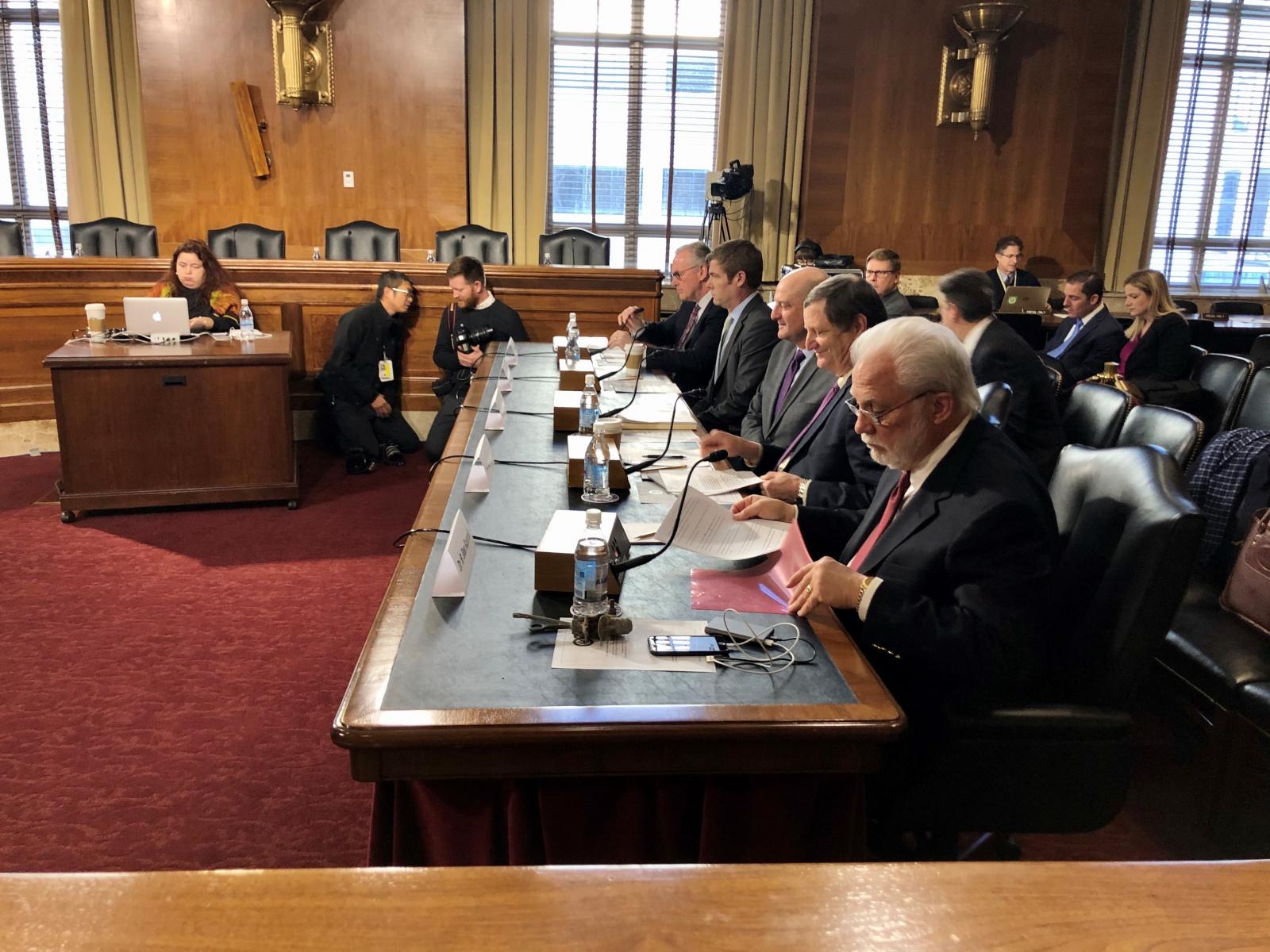PNNL’s Carl Imhoff addresses U.S. Senate Committee Regarding Wildfires and Power Grid Challenges
Imhoff tells committee the national laboratories can help with wildfire mitigation and grid resilience

Carl Imhoff (second from right at table) testified to the U.S. Senate Committee on Energy and Natural Resources on reducing wildfire impacts and improving grid resilience.
Published: January 20, 2020